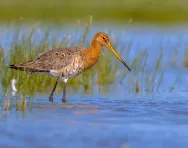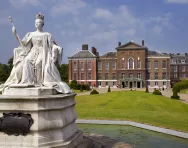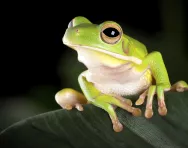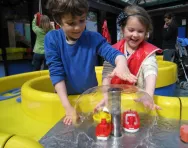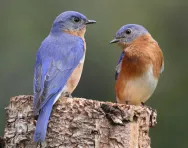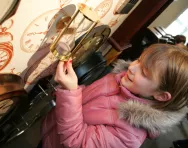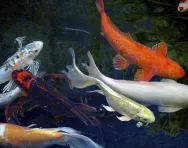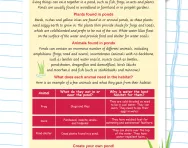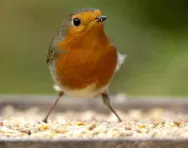Important update from TheSchoolRun
For the past 13 years, TheSchoolRun has been run by a small team of mums working from home, dedicated to providing quality educational resources to primary school parents. Unfortunately, rising supplier costs and falling revenue have made it impossible for us to continue operating, and we’ve had to make the difficult decision to close. The good news: We’ve arranged for another educational provider to take over many of our resources. These will be hosted on a new portal, where the content will be updated and expanded to support your child’s learning.
What this means for subscribers:
- Your subscription is still active, and for now, you can keep using the website as normal — just log in with your usual details to access all our articles and resources*.
- In a few months, all resources will move to the new portal. You’ll continue to have access there until your subscription ends. We’ll send you full details nearer the time.
- As a thank you for your support, we’ll also be sending you 16 primary school eBooks (worth £108.84) to download and keep.
A few changes to be aware of:
- The Learning Journey weekly email has ended, but your child’s plan will still be updated on your dashboard each Monday. Just log in to see the recommended worksheets.
- The 11+ weekly emails have now ended. We sent you all the remaining emails in the series at the end of March — please check your inbox (and spam folder) if you haven’t seen them. You can also follow the full programme here: 11+ Learning Journey.
If you have any questions, please contact us at [email protected]. Thank you for being part of our journey it’s been a privilege to support your family’s learning.
*If you need to reset your password, it will still work as usual. Please check your spam folder if the reset email doesn’t appear in your inbox.
Museums reviewed by parents: London Wetland Centre
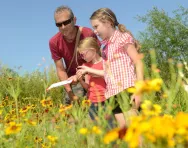
Discover a tranquil paradise hidden in the middle of London. From child-friendly bird hides to pond dipping and otter-spotting, the London Wetland Centre entertained Mary (5), William (3) and mum Elisabeth Galvin for a full day of healthy, wholesome, calm fun.
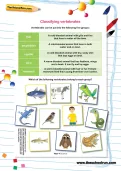
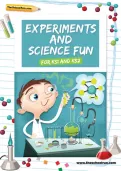
Download fantastic science resources today!
- Experiments And Science Fun pack
- Science Learning Programme for each school year
- All the instructions, questions and information you need
The London Wetland Centre is somewhere you’d never expect to find in the capital; some 45 acres of tranquil wetlands teems with wildlife, flowers and plants all set against the London skyline. Originally an ugly reservoir of four concrete basins, this area of west London has been totally transformed and is now home to an incredible 180 species of birds including kingfishers and bitterns – some of Britain’s rarest birds. It really is an oasis of peace and quiet (although it doesn’t matter how much noise children make as they won’t be as loud as the bitterns!).

Best for nursery and Reception kids
The brilliant Adventure area is one of the best playgrounds we’ve seen for younger children, and is easy to miss (we only found it on our third visit). It has tunnels to play real-life worms and caterpillars, a mini zip wire and a climbing wall. In the summer there is a wet area, so it's not only the ducks having a splashing good time.
Best for KS1 kids
Pond dipping is fascinating fun, especially with underwater cameras. Don’t miss the twice daily ‘meet the otters talk’, as children will love seeing just how fast these animals move through the water. Plus learn the difference between dabblers and divers (they’re both types of duck) at one of the warden’s feed sessions.

Best for KS2 kids
There aren’t many bird-spotting spots in the country that are so welcoming to children. There are six hides at WWT London and the Headley Hide is especially for beginners. Winter is a brilliant time to visit because this is when the unusual-looking ducks fly in; gadwall and shoveler varieties are worth looking out for. If you look hard enough you might even spot Ratty from The Wind in the Willows (his character is actually a water vole rather than a rat)!
Don't miss!
The Headley Hide beginners' bird-watching hide, complete with easy-to-follow books. The Peacock Tower has three storeys so you can view the entire wetlands from a bird’s eye view.
Half-term and holiday events for families
Look out for special activities for families during school holidays, from Guess Who? (the real-life nature version) to giant LEGO® brick animals and warden activities.
For Christmas, the London Wetand Centre is one of the most unusual places to see Santa as children are driven on a husky sleigh ride to his grotto; pre-booking essential.



Food and drink options
Everyone will be starving after a busy morning amongst nature, and there are plenty of wholesome goodies to tuck into from The Kingfisher Kitchen, from thick soups and warming jacket potatoes to little lunchboxes (served in an eco-friendly bucket) and even a cheeky glass of wine for mum. There are plenty of areas to bring your own picnic and the Courtyard Café serves coffee.
Getting there, prices and opening hours
Queen Elizabeth's Walk, Barnes, London SW13 9WT.
Barnes rail station is 25 minutes from Waterloo and it’s a 15 minute walk from there or a five-minute bus ride on the 72 or 33. Hammersmith is the nearest underground station and is connected by a ten-minute bus ride.
Prices and opening hours: Adults are £12.26, concessions £9.17 and children between 4 – 16 years are £6.75 (under fours free).
Summer opening hours: from 1 March until 31 October: 9.30am to 5.30pm (last admission 4.30pm). Winter opening hours: from 1 November until February 28 (or 29 when relevant): 9.30am to 4.30pm (last admission 3.30pm).

Pocket-money shop purchases
Wetland Animals Top Trumps kept us entertained on the way home (£5.50).
Online treasures if you're too far to visit
The daily wildlife sightings posts (check the Wildlife sightings tab on the website) are somewhat addictive. And have a look and listen to what the Centre’s most famous fans have to say about the place, from Joanna Lumley to Kate Humble and Chris Packham.
Links to the National Curriculum
Understanding nature is part of the primary science curriculum.
- KS1: identifying wild plants and common animals, seasons, habitats
- KS2: plant and animal life cycles, classifying living things
Photography: © Family in garden, Stephen Morris / WWT; Autumn scene, David Hardman / WWT; Otters, David Howarth / WWT; Frog, John Doherty / WWT; Tufted duck, Tom Hines / WWT; Water vole, Anne & Chris Algar / WWT
Museum reviews for parents: we need YOUR help!
TheSchoolRun is looking for families to visit museums and other educational venues around the country and 'review' them. Get in touch to have your say about the best family days out (with a learning twist!).
